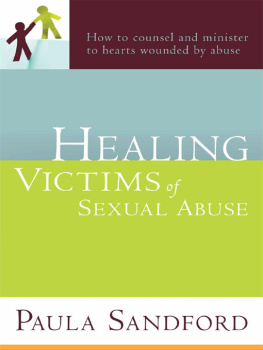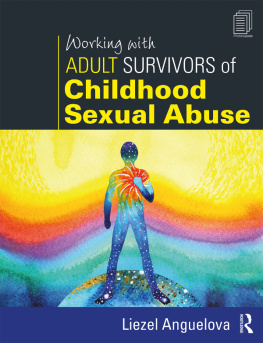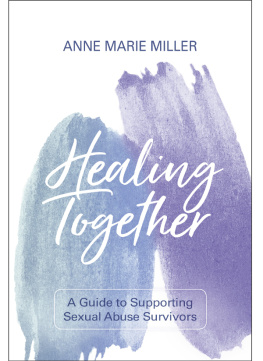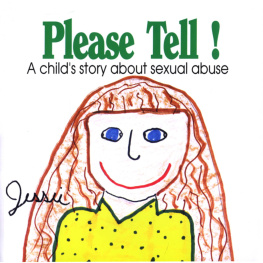W. W. NORTON & COMPANY
Copyright 2007 by Lions Crown Ltd.
For information about permission to reproduce selections from this book, write to Permissions, W. W. Norton & Company, Inc. 500 Fifth Avenue, New York, NY 10110
W. W. Norton & Company, Inc.
500 Fifth Avenue, New York, N.Y. 10110
www.wwnorton.com
W. W. Norton & Company Ltd.
Castle House, 75/76 Wells Street, London W1T 3QT
Toxic Water, Stunted Tree: An Introduction to Childhood Sexual Abuse
I f you plant a young tree beside an underground stream of toxic water, its roots will grow down until they reach that water. Every aspect of the trees growth, from roots to leaves, will be shaped by the contaminated water: the trunk will be stunted, the bark distorted, and finally the tree may bear peculiar leaves and diseased fruit. We may all notice this tree, its leaves and fruit, but how many of us would question the water that contaminated the soil wherein it grew?
If, before puberty, a girl is raped or sexually touched, and in the process
- made to feel pain and terror
- caused to feel helpless and vulnerable to destruction
- shattered and made to flee consciousness
then her future life choices have been changed and her ability to make those choices has been alteredIn short, her tomorrows have been stolen.
In this book we seek to explain the adulthood outcomes of childhood sexual abuse and the damage it wreaks. We will examine what was going on beneath the surface during the childs growing years and how these experiences have affected and shaped her growth. As recounted through therapy sessions, we will see the toxic effects of abuse and the survivors thoughts about herself in reaction to the abuse as she works to understand her personality, her behaviors, her relationships, and her lifestyle. Returning to our opening metaphor, we will observe the peculiar fruit of childhood sexual abuse in terms of how the damage developed invisibly, as it does beneath the opaque bark of a growing tree fed by toxic waters.
Numerous books have been written about childhood sexual abuse. Some of these are statistical studies of large populations; some are case histories of treatment, or individual reports of personal experiences. In this book, which can be characterized as a psychotherapists notebook, we will discuss different cases of sexual abuse in which young girls, ages one to twelve, were the victims. More important than the graphic details of the abuse are the different settings: the nature of the girls relationship to her abuser (father, uncle, brother, grandfather, friend of the family, authority figure in the community, or stranger), the duration or number of assaults, the length of time they continued (months to years), and how long the child carried her secret before getting help. Additional factors include the character and attitude of the perpetrator and how these alter the victims personality as she tries to interpret the meaning of the event, her role in the event, and her judgment of herself.
Her reaction to these childhood experiences will affect her development with regard to everything from psychological disorders, to personality characteristics, to lifestyle. All of these outward effects reflect her way of coping with her feelings during the abusive period of her life.
After examining the damage that results from years of adapting to her abuse, we will describe and discuss means of recovery, including forms of psychotherapy, medication, caring friends, support groups, and family involvement.
PREVALENCE OF ABUSE
We must be concerned with these behaviors by older persons toward children because of the devastating and often permanent harm that they cause through adolescence and adulthood, when most abuse survivors come for treatment. It is important to note that in the United States, the prevalence of childhood sexual abuse, as documented by congressional findings, the National Institute of Mental Health, and other reputable researchers including the Child Welfare Information Gateway, a part of the U.S. Department of Health and Human Services, varies from 15 to 30 percent.
There have been many studies on the prevalence of child sexual abuse. The statistics can be confusing because unwanted sexual contact including rape has been estimated to be from 12 to 36 percent in the United States. However, if we assume from these estimates an average of approximately 20 percent, then the personalities of about one in five females have been affected by this kind of experience. This is a significant portion of the population who deserve helpcompassion, support, and therapy.
SOME ASSUMPTIONS MADE IN THIS BOOK
The reader may wonder about my exclusive use of the pronoun she throughout this book, as well as the absence of discussion about male childhood sexual abuse. My psychotherapy practice since the 1978 publication of The Best Little Girl in the World became, and has remained, almost exclusively female. The reason this book focuses on female childhood sexual abuse is that all my abused patients are female.
All of the perpetrators presented here are males. In my years of doing long-term individual psychotherapy with dozens of women who were sexually abused as children, the perpetrators have all been males. This is not to say that female perpetrators abusing children do not exist. We do not know the precise ratio of male perpetrators to female perpetrators, but it is generally accepted that the large majority are males.
The Sexually Abused Child as an Adult
C hildhood sexual abuse derails normal personality development, creating a variety of alternative outcomes and causing behaviors to develop that will further damage the victim. The moment a child is abused, with no one to tell about it, is the moment she understands there is no one to protect her. She will develop a variety of defenses, real and imaginary, to provide a sense of safety, or she will attempt to produce a feeling of insensitivity and emotional numbness to whatever is happening to her.
The ways she devises to protect herself may go unnoticed for years. When they emerge for others around her to witness, these defenses may seem bizarre or foolish to some, immoral to others. It is important to remember that these mechanisms developed and evolved years before they emerged in the childs conscious mind. The child who was repeatedly traumatized had no hope that the assaultive behavior would ever end, and no context within which to understand it. As we look at the case histories of the women in Part Two, we will see how each devised her own concepts for understanding the episodes she suffered through and how she acted on these concepts.







